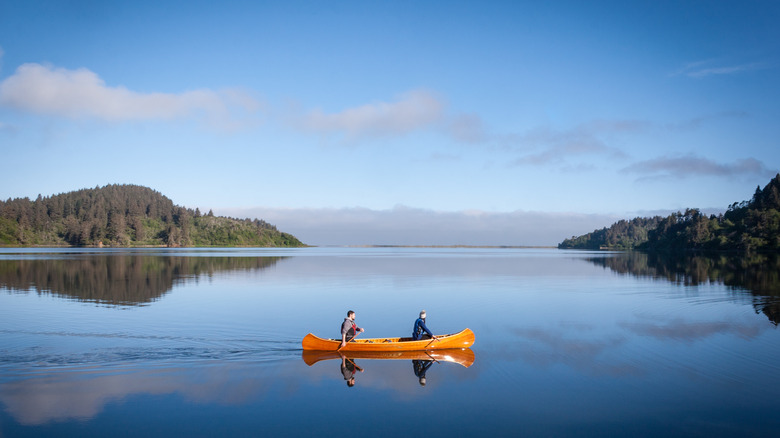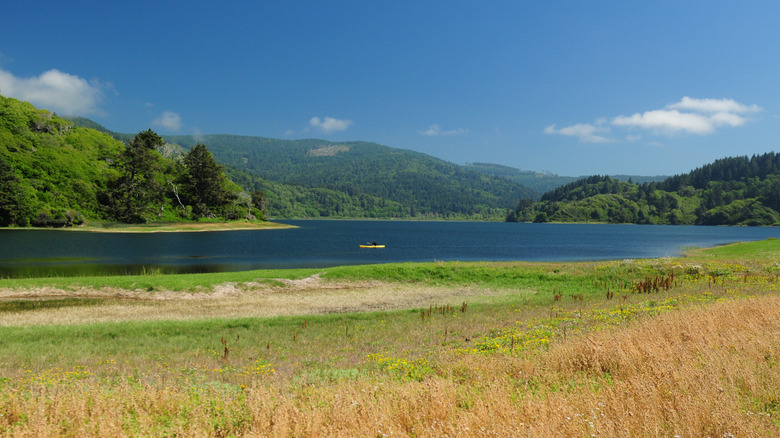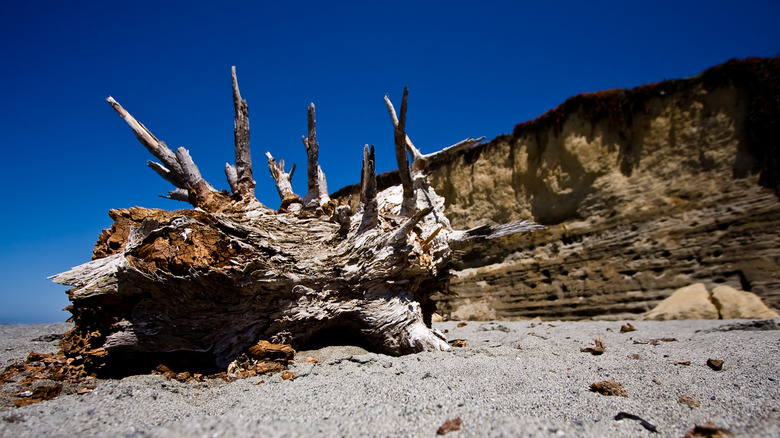One Of North America's Largest Lagoon Systems Is A Hiker's Paradise Between The Beach And California Redwoods
Between Northern California's towering redwoods and its world-famous coastal Pacific shoreline, there are some stunning natural wonders, which are often overlooked by visitors to world-famous sites like Yosemite National Park and Redwood National and State Parks (which is home to the world's tallest trees). From the incredible turquoise waters of Trinidad to the beautiful El Matador beach just off the Pacific Highway, Northern California offers some of the most underappreciated treasures in the state. One of these gems is Humboldt Lagoons State Park, a series of coastal sanctuaries that offer a rare blend of seclusion and rugged natural beauty, as well as one of the largest lagoon systems in North America.
From lush marshes to dramatic ocean backdrops, the Humboldt Lagoons have become a haven for hikers and birders, as well as for those looking for a nature experience away from the crowds. With coastal trails and historic landscapes, the lagoons invite visitors to explore a lesser-known side of California, a wild sanctuary off the beaten path. Beyond the outdoor recreational opportunities such as hiking and water sports that this area of California has to offer, the Humboldt area is also one of great cultural and historical significance, as the ancestral home of the Yurok tribe, who have lived in the area for thousands of years.
The Humboldt Lagoons, a hiker's paradise
Each of the four lagoons — Big Lagoon, Stone Lagoon, Dry Lagoon, and Freshwater Lagoon — has its own personality and natural rhythm. Of the four, Big Lagoon is the most accessible and, you guessed it, the largest, offering tranquil paddling conditions and plenty of wildlife. For those seeking solitude, Stone Lagoon is more remote. Freshwater Lagoon offers incredibly lush plant diversity and serene landscapes, and is a favorite amongst nature lovers. Meanwhile, Dry Lagoon, a seasonal marshland, is admired for its wildflower displays and is best explored by foot. Together, these interconnected ecosystems form a critical segment of the Pacific Flyway, attracting multiple species of migratory birds.
The Humboldt Lagoons are also a hiker's paradise. The California Coastal Trail cuts through the park and offers panoramic views of the grassy wetlands, towering redwoods, and windy beaches. Another popular hike begins at Dry Lagoon and leads to Stone Lagoon, a moderately difficult hike that's totally worth it for intermediate hikers. This route traverses coastal prairies where you may see Roosevelt elk grazing in their natural habitat. The Big Lagoon Beach Trail is best for those wanting to do some beachcombing and enjoy views of the Pacific Ocean, which seasonally (between April and November) attracts migrating whales. It goes without saying that the lagoons are somewhere you absolutely don't want to miss on a coastal California road trip.
Enjoy the tranquility of the lagoons from the water
Of course, aside from hiking, water-based activities are also central to the Lagoon system experience. Kayaking and canoeing are great ways to explore the waters, with Big Lagoon being the best spot to do this. With its expansive sheltered waters, Big Lagoon is a good place to start for beginners. Stone Lagoon is more secluded and offers seasonal kayak rentals at the Stone Lagoon Visitor Center. If you're lucky, you may see otters at play or bald eagles soaring overhead while you paddle.
The lagoons are located along the Redwood Highway (U.S. Route 101) between Trinidad and Orick in Humboldt County, not far from the Redwood National and State Parks (where you can stroll through a fairytale forest). To get there from San Francisco requires a 5-hour drive north. Driving along the avenue of giants, or passing the dramatic coastlines along the way, provides a travel experience as rewarding as the destination itself. If you're coming from out of state, the closest airport is Arcata-Eureka Airport (ACV). From there, the drive to the park takes less than 30 minutes.
The best time to visit the lagoons is from late spring through early fall, when the weather is milder and drier. During the winter months there are occasional coastal storms and heavy rainfall. The Humboldt Lagoons remain a sanctuary off the beaten path and a testament to nature's quiet power. It's by no means just a stop off the Redwood Highway, but a destination in its own right, offering ancient redwoods, mist-covered lagoons, and quiet beaches.


